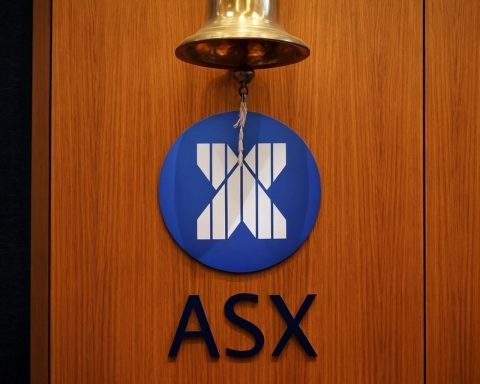Founder & CEO Doug Lebda (age 55) died Sunday Oct. 12, 2025 in an all-terrain vehicle accident [1]. Law enforcement responded to a missing-person report around 7:30 PM and found Lebda dead at his North Carolina farm by 8:00 PM, with no foul play suspected [2]. – Succession: LendingTree’s board immediately named COO Scott Peyree as new CEO and lead independent director Steve Ozonian as board chairman [3] [4]. The board praised Lebda as a “visionary leader” who “transformed the financial services landscape” [5]. – Business impact: LendingTree (NASDAQ: TREE) stock plunged on the news – down roughly 4% during Monday trading and about 8% by close [6] [7]. As of Oct. 14, TREE trades in the mid-$50s (around $54.6 per share) [8]. Analysts have mixed views but a consensus “moderate buy” rating, with a price target near $65 [9] (implying ~20% upside from current levels). – Company profile: Founded in 1996 in Charlotte, LendingTree built one of America’s largest online lending marketplaces. Its platform connects consumers with loans, credit cards, insurance and other financial products from ~430 partner institutions [10] [11]. Under Lebda’s leadership the company grew from a startup into a publicly traded fintech that helped “millions of consumers” shop for loans [12].
CEO Death and Company Response
On Monday Oct. 13, 2025, LendingTree (Charlotte-based fintech) confirmed that Doug Lebda, the company’s founder, chairman and CEO, died in an ATV crash the prior day. The company’s press release stated that Lebda “passed away unexpectedly” on Oct. 12 in an all-terrain vehicle accident [13]. A business-insider report notes that deputies found Lebda’s body at his home in Mill Spring, N.C., after a 7:31 PM missing-person call; investigators saw “no indications of foul play” [14]. Lebda was 55. In an official statement, the LendingTree board said “We are deeply saddened by the sudden passing of Doug. Doug was a visionary leader whose relentless drive, innovation and passion transformed the financial services landscape, touching the lives of millions of consumers” [15]. The board vowed to honor his mission of simplifying financial decisions for consumers [16].
In the immediate aftermath, LendingTree’s board appointed Scott Peyree (former COO and president) as its new CEO, effective Oct. 13 [17] [18]. Steve Ozonian, a longtime independent director, became board chairman [19]. Peyree (who had led operations through rapid growth phases) released a statement noting that Lebda built a “strong management team” and vowing to carry on their shared vision [20]. The company emphasized continuity: its leadership team and business strategy remain intact under Peyree. Family members, including wife Megan Lebda, also issued heartfelt tributes praising Doug Lebda’s generosity and vision [21].
Market Reaction: Stock Tumbles Amid Broader Rally
LendingTree’s stock (NASDAQ: TREE) reacted sharply. On Oct. 13, TREE shares fell approximately 4% intraday, and nearly 8% from the prior close by market end [22] [23]. For context, U.S. markets were rising: the Nasdaq Composite jumped about +2.2% on Monday [24] amid a broad rally on easing trade tensions. LendingTree’s drop was therefore an outlier driven by the CEO news. By midday Oct. 14, TREE was trading around $54.6 [25], down roughly 4–5% for the session. (For comparison, the 50-day and 200-day moving averages stand near $65.75 and $49.60, respectively [26].)
Analysts moved to adjust their views. A MarketBeat survey shows mixed ratings: some firms like Zacks recently downgraded TREE to a “Hold”, while others (e.g. KBW) still call it a “Strong Buy” [27]. Two analysts rate it “Strong Buy”, six “Buy”, two “Hold” and one “Sell” [28]. The consensus remains modestly positive: a “Moderate Buy” rating with an average price target about $65 [29]. This target is ~20% above current levels, implying analysts see potential upside once uncertainty fades.
LendingTree’s Business and Financials
LendingTree operates a nationwide online marketplace. Consumers use its site to compare offers on mortgages, personal and auto loans, credit cards, insurance and other products. According to company filings, LendingTree’s platform spans roughly 430 financial partners [30]. It “provides customers with access to the best offers on loans, credit cards, insurance and more” via this network [31]. Over 25+ years, the company says it “helped millions of customers obtain financing, save money, and improve their financial and credit health” [32]. (In media interviews Lebda often told the story of founding LendingTree after struggling to get a mortgage in 1996 – he envisioned a consumer-focused “search engine” for loans [33].)
Financially, LendingTree had been performing well before this news. In the July 2025 quarter, the firm reported Q2 revenue of $250.1 million, up 19% year-over-year, and EPS of $1.13, beating Street estimates [34]. Net income was still modest (reflecting marketing and tech costs), but the company’s core metrics like the “variable marketing margin” remained strong. Management provided guidance in late July: it expects Q3 2025 revenue of about $273–281 million and adjusted EBITDA around $34–36 million [35]. (For full-year 2025, the firm sees ~$1.0–1.05 billion in sales.) Thus, under existing plans LendingTree anticipated continued growth into year-end [36].
Expert Views and Outlook
Industry analysts emphasize that the CEO succession introduces short-term uncertainty but the underlying business is stable. LendingTree’s board and new CEO have reiterated that the current strategy and guidance remain in place. Pine Street Capital analyst comments (marketbeat.com reports) note that even without Lebda, the company has a strong leadership bench and a healthy balance sheet (roughly $286M cash at last report [37]). RBC Capital, KBW and other banks had generally positive long-term outlooks before the accident, and many maintain those views now.
From a valuation standpoint, TREE is attractively priced after the drop. Its P/E ratio is negative (reflecting recent modest losses), but Wall Street’s price target of ~$65 suggests confidence in a recovery. Insider selling had occurred over the summer (several executives trimmed positions around $68–70 [38]), but no major share sales were reported immediately around the news.
In the broader market, LendingTree’s niche is tied to consumer lending trends. Rising interest rates (30-year mortgages above 6% recently [39]) have cooled some loan demand, but digital shopping for financial products remains robust. For example, tech media note that student-loan policy changed abruptly this month: the Education Dept. resumed loan forgiveness for ~2 million borrowers on income-based plans [40]. Such policy shifts – covered by outlets like TechSpace 2.0 (ts2.tech) – show the dynamic financial environment LendingTree serves. Investors will be watching how macro factors (rates, consumer sentiment, regulation) evolve.
Despite the sudden shock, company insiders stress continuity. In the official release and press quotes, Scott Peyree emphasized that the “most immediate impact” of Lebda’s legacy is a strong management team that can carry forward their shared vision [41]. His message – that operations and customer-focused innovation will continue – aims to reassure investors and partners.
Conclusion
Doug Lebda’s death is an unexpected tragedy for LendingTree and the fintech community. As the company mourns its founder, it faces the task of maintaining momentum. Early signals are mixed: stock volatility reflects uncertainty, but analysts note that LendingTree’s fundamentals and growth plans remain largely intact. The board has reiterated its commitment to Lebda’s consumer-empowerment mission, and new CEO Scott Peyree has vowed to keep building on that legacy [42]. In coming weeks, investors will parse earnings updates and market trends for clues on LendingTree’s path forward.
Sources: Company press release and news reports [43] [44] [45] [46] [47] [48] [49] [50] [51] [52] provide details cited above.
References
1. www.businessinsider.com, 2. www.businessinsider.com, 3. www.marketscreener.com, 4. www.businessinsider.com, 5. www.wbtv.com, 6. timesofindia.indiatimes.com, 7. www.investing.com, 8. www.investing.com, 9. www.marketbeat.com, 10. www.marketscreener.com, 11. www.newsweek.com, 12. www.newsweek.com, 13. www.marketscreener.com, 14. www.businessinsider.com, 15. www.wbtv.com, 16. www.marketscreener.com, 17. www.marketscreener.com, 18. www.businessinsider.com, 19. www.marketscreener.com, 20. www.marketscreener.com, 21. timesofindia.indiatimes.com, 22. timesofindia.indiatimes.com, 23. www.investing.com, 24. www.share-talk.com, 25. www.investing.com, 26. www.marketbeat.com, 27. www.marketbeat.com, 28. www.marketbeat.com, 29. www.marketbeat.com, 30. www.marketscreener.com, 31. www.marketscreener.com, 32. www.marketscreener.com, 33. www.newsweek.com, 34. www.marketbeat.com, 35. www.prnewswire.com, 36. www.prnewswire.com, 37. www.nasdaq.com, 38. www.marketbeat.com, 39. www.cbsnews.com, 40. ts2.tech, 41. www.marketscreener.com, 42. www.marketscreener.com, 43. www.businessinsider.com, 44. www.marketscreener.com, 45. www.wbtv.com, 46. timesofindia.indiatimes.com, 47. www.investing.com, 48. www.marketbeat.com, 49. www.prnewswire.com, 50. ts2.tech, 51. www.share-talk.com, 52. www.investing.com










